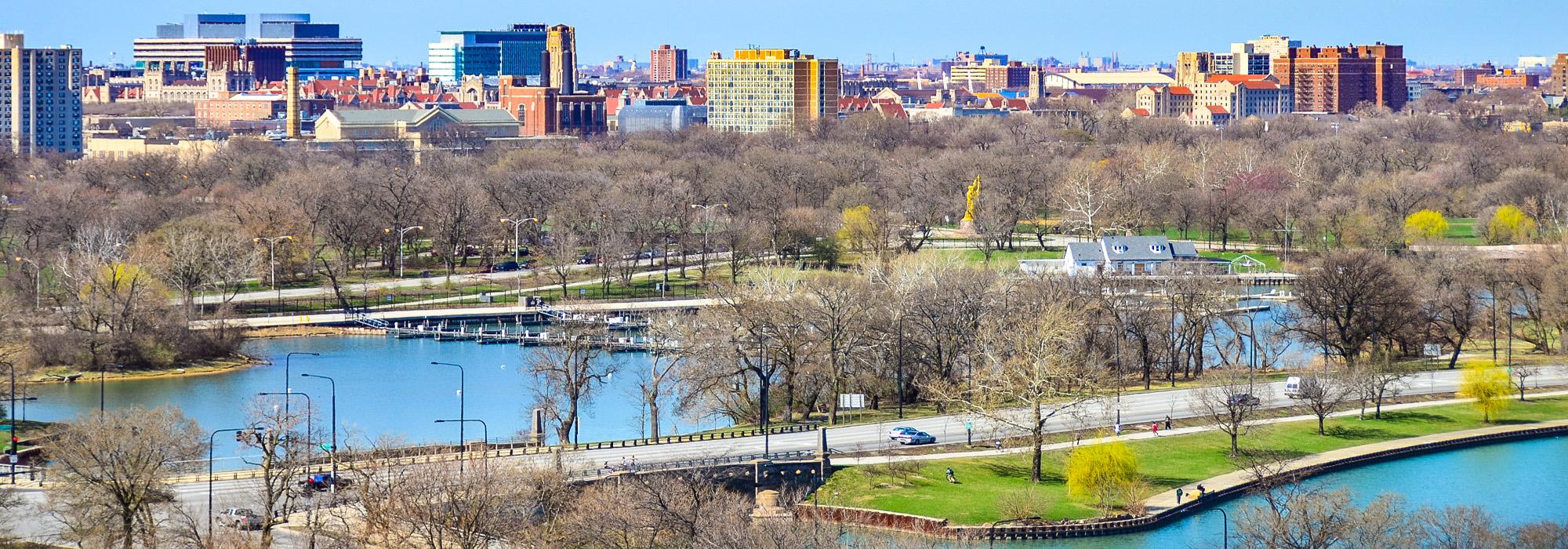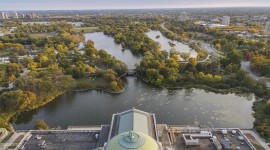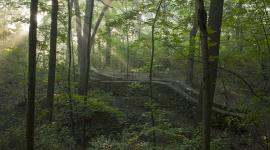Is Donald Trump the Obama Presidential Center’s Most Unexpected Ally?
On January 16, 2020, the City of Chicago and the Federal Highway Administration (FHWA) released a revised Assessment of Effects with a laundry list of negative impacts—technically known as “adverse effects”—that the Obama Presidential Center (OPC) would have on the Olmsted-designed Jackson Park and Midway Plaisance. The assessment is part of a required federal review pursuant to Section 106 of the National Historic Preservation Act, triggered in part because the parks are listed in the National Register of Historic Places. Under normal circumstances, the FHWA, the lead federal agency in the OPC review process, would now seek to avoid, minimize, or mitigate those adverse effects. But instead, the agency is creatively applying a Trump-era policy position—as yet unapproved changes to the National Environmental Policy Act, noted below—to ignore the OPC’s harm to the parkland. Between the lines of the otherwise wonkish and technical federal assessment is the stunning irony that the OPC’s proponents are relying on the Trump Administration’s pro-deregulatory posture to get their project built. Their cause is being aided by Fred Wagner, the former chief counsel of the FHWA during Obama’s presidency, whom the Obama Foundation has hired to help navigate the federal reviews.
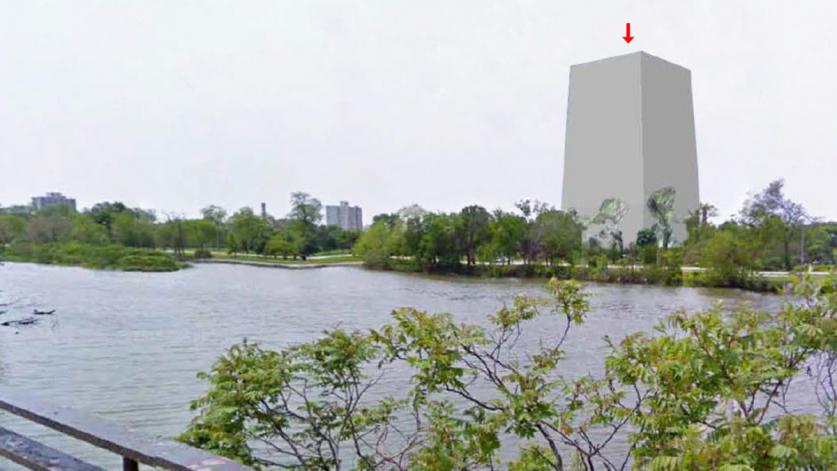
The assessment states that the OPC would harm “specific elements of the historic district,” further impacting “how Jackson Park and the Midway Plaisance reflect conscious decisions made by the Olmsted firm in determining spatial organization, relationships between major features, views, patterns of circulation, arrangement of vegetation, and hierarchy of buildings and other constructed features.”
In addition, the OPC would have an adverse effect on the Chicago Parks and Boulevard System Historic District because it will “alter, directly and indirectly, characteristics of one portion of the district that qualify it for inclusion in the National Register.” Notably, the stark, monolithic OPC tower would also diminish the prominence of the Museum of Science and Industry Building. The tower’s enormous height–which has been increased from some 170 to 235 feet since the federal reviews began—means that the adverse effects of the OPC will spread well beyond its 19.3-acre campus into the 593-acre park. Though disappointing, these negative impacts had already been outlined by official “consulting parties” to the review process more than two years ago.
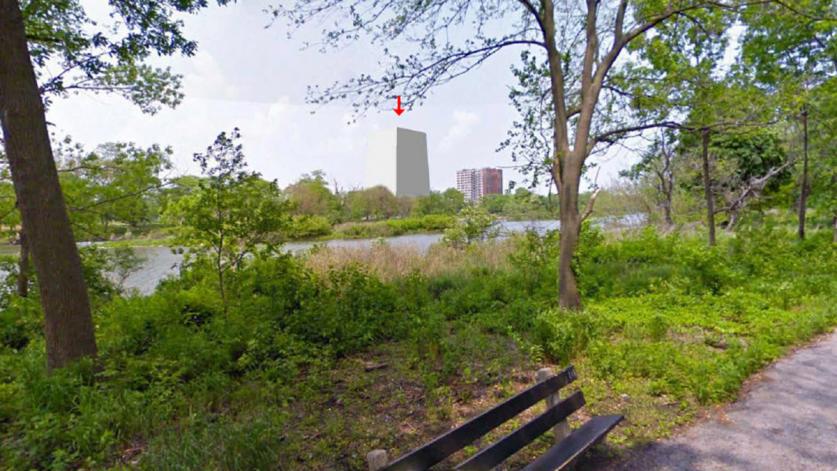
With the negative impacts formally documented by federal agencies and the City of Chicago (coauthors of the recent assessment), we are now at the critical point of the Section 106 review, when ways to avoid, minimize, or mitigate the OPC’s adverse effects on the parks would normally be explored. But to the astonishment of many, the recent assessment also contained language that would, on its face, completely exempt the OPC when it comes to addressing the adverse effects it would bring:
The actions of the City described in this report (authorizing construction of the OPC, closing roads, and relocating an existing track and field in Jackson Park) do not require Federal funding or approval and, therefore, are not subject to the NHPA’s requirement to consider avoidance, minimization, and mitigation of adverse effects to historic properties. The Federal agencies do not have sufficient control to condition project approval for the construction of the OPC, closing roads in Jackson Park, or relocating the existing track and field in Jackson Park.
The FHWA is now asserting that after two years of review under the National Historic Preservation Act, the OPC is not subject to the Act’s requirements. In other words, the FHWA will not really do anything to “avoid, minimize, or mitigate” the OPC’s adverse effects. That is a confounding interpretation of the federal agency’s responsibilities.
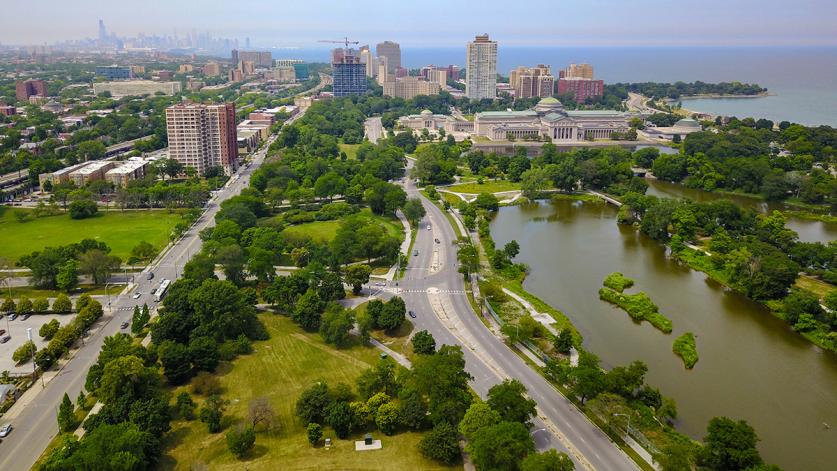
The language underpinning that precedent-setting approach to federal reviews under Section 106 of the National Historic Preservation Act is uncannily reminiscent of the language that the Trump Administration is currently using in its attempt to pull the teeth from the National Environmental Policy Act (NEPA), in part by redefining a federal action to exclude “non-Federal projects with minimal Federal funding or minimal Federal involvement where the agency cannot control the outcome of the project.” The proposed revision is just one of many sweeping changes to NEPA the administration is now putting forward.
The FHWA’s position ignores federal regulations promulgated by the Advisory Council on Historic Preservation (ACHP), the federal government’s highest authority on historic preservation, which mandate that federal agencies consider the “reasonably foreseeable” effects of the federal undertaking (36 CFR 800.5(a)(1)), not just the effects that the agency directly controls. In this case, the federal undertaking has, from the beginning, been collectively defined as authorizing federal funds for road work, amending a federal grant agreement, closing roads and relocating extant facilities, and “the construction of the OPC in Jackson Park.” Although the federal government is not building the OPC per se, its construction is a reasonably foreseeable effect of the federal actions. That principle is fundamental to the National Historic Preservation Act because it ensures that the government does not give funding, permits, or approvals with one hand while covering its eyes with the other.
The ACHP has already begun to push back, telling FHWA representatives and others involved in a recent public meeting that the city’s actions are indeed “part of the undertaking” and that federal agencies must make a good-faith effort to resolve the adverse effects, taking into account the level of federal involvement. The ACHP took a similar position during reviews of the Keystone XL pipeline, a project that then-President Obama was anxious to prevent.

Meanwhile, the City of Chicago continues to maintain that it has already done its part to address the adverse effects the OPC would have on historic public parkland. But that patently flimsy line of defense has been completely demolished by none other than Lori Lightfoot, the city’s new mayor, who candidly told the Chicago Sun-Times in a recent interview, “I think the city of Chicago in the prior administration, essentially said, ‘Come, whatever you want you get.’ What the Obama Foundation got was public parkland confiscated to build the OPC, rather than vacant and plentiful city-owned land, or land owned by the University of Chicago, which submitted the successful bid for the OPC.
Mayor Lightfoot’s refreshing candor, not to mention the steady stream of rubber-stamped ordinances approved by the Emanuel Administration, most accurately characterizes the level of resistance—or complete lack thereof—the Obama Foundation faced from city officials in its plans to reshape Jackson Park and the Midway Plaisance. What remains to be seen is whether federal agencies, now fully aware of the effects the OPC would have, will act according to their mandate or choose to remain on the sidelines. If they fail to act, then, strange as it may seem, the Obama Presidential Center will be among the high-profile big winners in President Trump’s crusade to become the most vigorous deregulator in the nation’s history.



